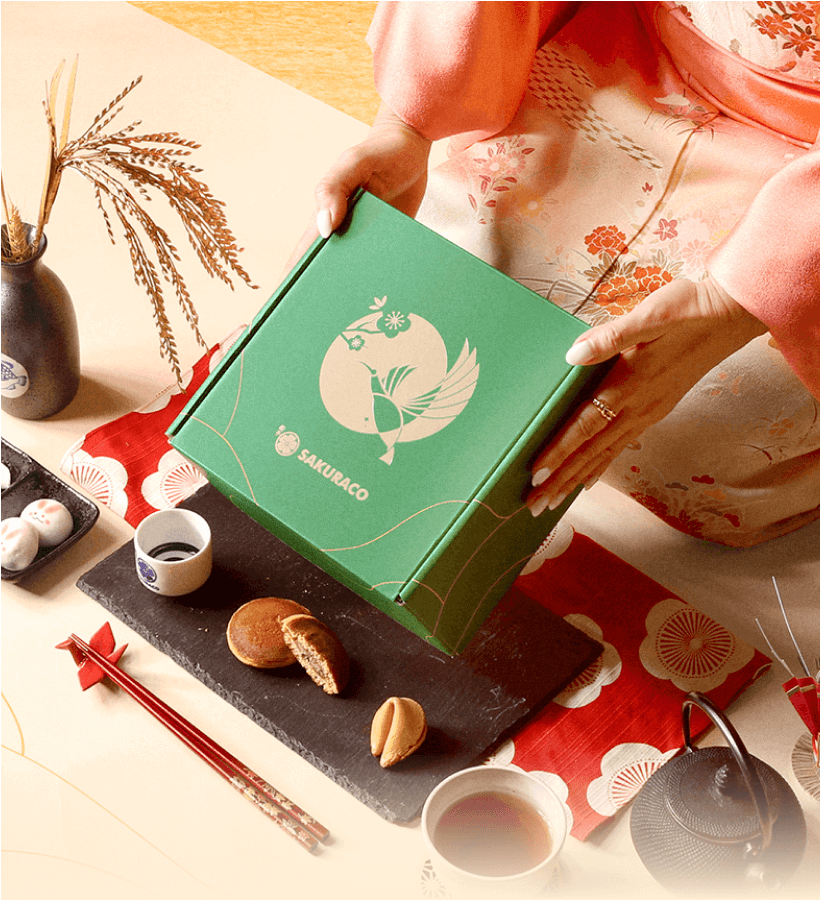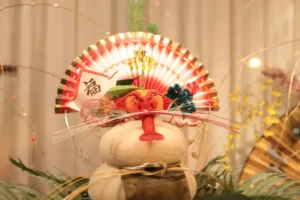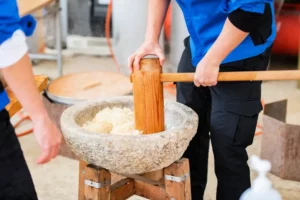At first glance, akashiyaki looks a lot like takoyaki, Japan’s famous octopus street food from Osaka. But take one bite, and you’ll notice it’s an entirely different experience! Akashiyaki is softer, lighter, and richer in flavor, with a delicate egg base that melts in your mouth.
Table of Contents
ToggleWhat is akashiyaki?
Akashiyaki is a small, round dumpling made with a smooth batter of eggs, wheat flour, and octopus. Unlike takoyaki, which is often topped with sauce, mayonnaise, and bonito flakes, akashiyaki is enjoyed plain and dipped into a warm, flavorful dashi broth. The result is a dish that’s light, savory, and delightfully comforting.

Each dumpling has a high egg ratio that creates an almost custard-like texture, soft and delicate rather than crispy. Locals often describe it as “melting on the tongue.” Inside, bits of octopus add a satisfying chew and just the right briny flavor from the nearby Akashi Strait, one of Japan’s most famous octopus fishing areas.
In Akashi, people have been enjoying this snack for over a century, and it remains as popular today as it was then. You can find shops and food stalls throughout the city. Each of them has its own secret batter recipe that has been passed down through generations.
How did akashiyaki begin?
Akashiyaki’s story stretches back to the late Edo period. At that time, Akashi City was renowned for producing akashidama, beautiful imitation coral ornaments used in hairpins and decorative items. These were made using egg whites mixed with saltpeter as a hardening agent, but that process left a big question: what to do with all the leftover yolks?

Resourceful locals decided not to waste them. They mixed the egg yolks with flour and added small pieces of fresh octopus caught from nearby waters. The mixture was cooked in a special pan with hemispherical molds, resulting in golden, round dumplings. What started as a clever solution to food waste became a beloved regional specialty.
By the early 1900s, locals began selling akashiyaki from small stalls, eventually turning it into a city signature. In Akashi, the dish was called initially tamagoyaki, meaning “grilled egg.” In the 1980s, when the city promoted tourism, the name officially changed to akashiyaki to emphasize its local roots.
Are you looking for unique snacks that carry the spirit of akashiyaki? Sakuraco delivers traditional Japanese snacks, teas, and sweets from local Japanese makers directly to your door so you can enjoy the latest treats directly from Japan!
What makes Akashi octopus special?
The secret behind authentic akashiyaki lies in the octopus. The Akashi Strait, which connects the Seto Inland Sea to Osaka Bay, is famous for having some of the strongest tidal currents in Japan. These fast-moving waters make the octopus firmer, giving it a naturally sweet flavor and a pleasingly springy texture.

Because of this, restaurants that take pride in their akashiyaki dishes always use local Akashi octopus. Combined with high-quality eggs and light, fragrant dashi, it creates a dish that’s simple yet spectacular. When you take a bite, the flavors of sea and earth come together in perfect harmony, something that truly represents the spirit of Hyogo cuisine.
How is akashiyaki prepared?
Making the perfect akashiyaki requires skill and patience. First, eggs are whisked together with a small amount of flour and dashi stock to form a thin, runny batter. Small pieces of boiled octopus are placed into each mold of the special copper griddle, then covered with the batter.
The cook carefully rotates the dumplings as they set, ensuring they achieve a golden color and a uniform shape. This process may seem simple, but achieving the right texture requires practice and attention to detail. The goal is to create a shell that retains its shape while maintaining a velvety-soft interior.
Akashiyaki is typically served in sets, often accompanied by a bowl of steaming dashi on the side. Instead of using chopsticks, fans traditionally pick up each dumpling with a small pick or skewer, dip it into the broth, and enjoy it piping hot.
Akashiyaki and Takoyaki: Family, But Not Twins
Akashiyaki, a soft egg-rich dumpling from Hyogo Prefecture, is the ancestor of Japan’s beloved takoyaki. In the 1930s, an Osaka street vendor who sold beef-filled “radio-yaki” drew inspiration from akashiyaki and swapped the beef for octopus. Over time, cooks added ginger, tempura flakes, sauce, and mayonnaise, transforming the dish into the modern takoyaki we know today.
Compared to takoyaki’s saucy, bold taste, akashiyaki is elegant and mild. Its flavor relies entirely on the freshness of its eggs, octopus, and broth, rather than relying on heavy condiments. Locals often say it’s the dish for those who “truly appreciate simplicity.”

Where can you try akashiyaki today?
Akashi City remains the heart of akashiyaki, with around 70 specialty shops to explore. Some of the most popular include Honke Kimuraya, one of the oldest establishments, and Hayashi Shoten, famous for its secret broth recipe. Visitors can watch cooks skillfully flipping dumplings on the griddle before dipping them in fragrant dashi.
You can also find akashiyaki at Hyogo’s food festivals or at Osaka’s street fairs, where Kansai’s best regional dishes are celebrated. Some souvenir shops even sell frozen or instant versions, letting travelers bring a taste of Akashi home. The best way to enjoy it, though, is fresh off the grill, accompanied by a side of warm broth and a stroll through the lively streets of Akashi. It captures the cozy, flavorful essence of Kansai life in a bite-sized form.
So, the next time you visit Hyogo, take a break by the seaside and find a shop serving this golden delicacy. Dip it into the fragrant broth, let it melt in your mouth, and taste more than just a snack; you’ll experience a piece of Hyogo’s heart. Have you ever tried this dish or plan to try it in the future? Let us know in the comments below!











